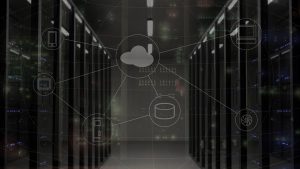We live on the precipice of huge change. The rate of technological development is beginning to outpace our ability to measure or predict it, and very soon we might reach the point of no return: the singularity. This is the point at which technology becomes self-perpetuating. Where new breakthroughs and developments come at an increasingly fast pace, such that the world as we know it is completely transformed.
The Difference Between Deep Learning and Machine Learning
Futurists, scientists, and thinkers predict that this point will occur as a result of AI. Once AI becomes sophisticated enough, it will be able to make its own breakthroughs and lead to untold innovation and discovery.
But that’s scary, right? How can we manage or control a runaway artificial intelligence? What if it goes “rogue?” What would life look like after an AI revolution?
The good news is that fears about AI are often predicated on a misunderstanding of the technology. There are multiple “types” of AI, and the nightmare visions depicted in films like The Terminator and The Matrix are the result of the far less likely kind.
The General AI
The “rogue AI” of science fiction movies is in fact an example of a specific type of AI, called “general AI.” General AI, also referred to as “strong AI,” is an artificial intelligence that has no fixed purpose or protocols. This is an artificial intelligence with the ability to adapt, to learn, and to perform multiple jobs.
One of the most famous tests for AI is the “Turing Test.” This test states that if a person should speak with an AI online and be unable to distinguish the conversation from one with a real human, then that AI has passed the test and should be declared a general AI.
Such an AI would need to be hugely sophisticated and would need to emulate human emotions, personality quirks, and more. It would need a huge amount of information stored, and it would need to be able to manipulate that information in a realistic and versatile manner.
Such an AI would be extremely powerful though: as it could answer any question (drawing on the web as a limitless source of information), write entire novels in seconds, and conduct its own research. It could even build other AIs.
General AIs that come close to this include IBM’s Deep Blue or the well-known Watson. However, such AIs are a long way from being true examples of strong AI. Both these use a method of learning called “deep learning” to build neural networks that behave much like the neurons in a human brain. This is what we refer to as “deep learning.”
But the good news is that we are a long way from a strong AI that can “choose” to disobey its masters!
Weak AI and Machine Learning
Another type of AI is called “weak AI.” This is a far narrower sense of AI that is designed to perform a single job. That might mean the AI that controls the behavior of opponents in a computer game, or AI designed to alert you to suspicious activity on the CCTV camera. These types of AI are far more commonplace but simply cannot act outside of their programming – they follow set decision trees that are highly predictable and inflexible.
Machine learning falls somewhere between these two concepts and is what powers the highest forms of AI in all categories. Machine learning is not a form of AI in itself, but rather is the process that is often used to provide the logic for AIs. Essentially, machine learning is the collection of huge data sets that can then be used to identify patterns and activities.
For Instance
You would teach a CCTV AI to identify suspicious behavior by using machine learning to develop “computer vision.” This would mean showing the AI millions of images and then alerting it to which ones should be considered “suspicious.” You never actually tell the system what should be considered as such, but through millions of examples, the system starts to identify patterns.
These patterns are then what allows an effective system to make better predictions than even humans – with no direct “programming.” Machine learning can be used to generate deep learning systems and narrow, weak AIs. But without the directive installed through additional programming, it is simply a database.
The exciting thing (or scary thing, depending on how you look at it), is that our ability to generate gigantic data sets and analyze them is growing at an exponential rate. This is quickly leading to AIs that can perform tasks a human never could. This will undoubtedly accelerate human discovery and change the world as we know it.
But we’re still nowhere close to cracking the black box that is human consciousness.
Christopher Morgan Fulfillment Center Services
Christopher Morgan Fulfillment has access to more than 600,000 square feet of professionally managed, secure, dry storage space, warehousing & distribution in Milwaukee and in all regions of the United States.
Our facilities are located in:
- New Berlin, Wisconsin
- Milwaukee, Wisconsin
- Atlanta, Georgia
- Los Angeles, California
- East Brunswick, New Jersey
 Direct To Customer
Direct To Customer
- Direct Response
- E-commerce Fulfilment
- Catalog/Print Advertising
- Continuity/Membership/Awards
- Customer Contact Center
 Retail Distribution
Retail Distribution
- Big Box Retail Distribution
- Home Shopping
- Electronic Data Interchange (EDI)
- Experts at Retail Compliance
- Partner Testimonials
BUSINESS TO BUSINESS
- Warehousing & Distribution
- Lot Control
- Kitting/Light Assembly
- Inspection Services
- Repackaging & Rework Services

